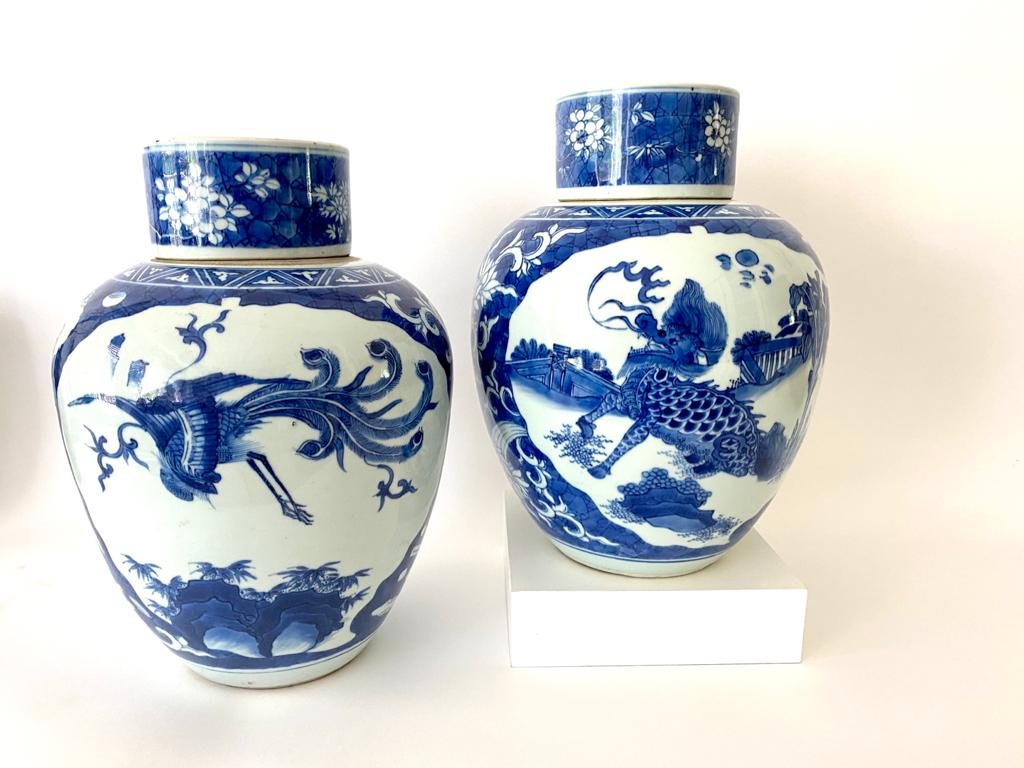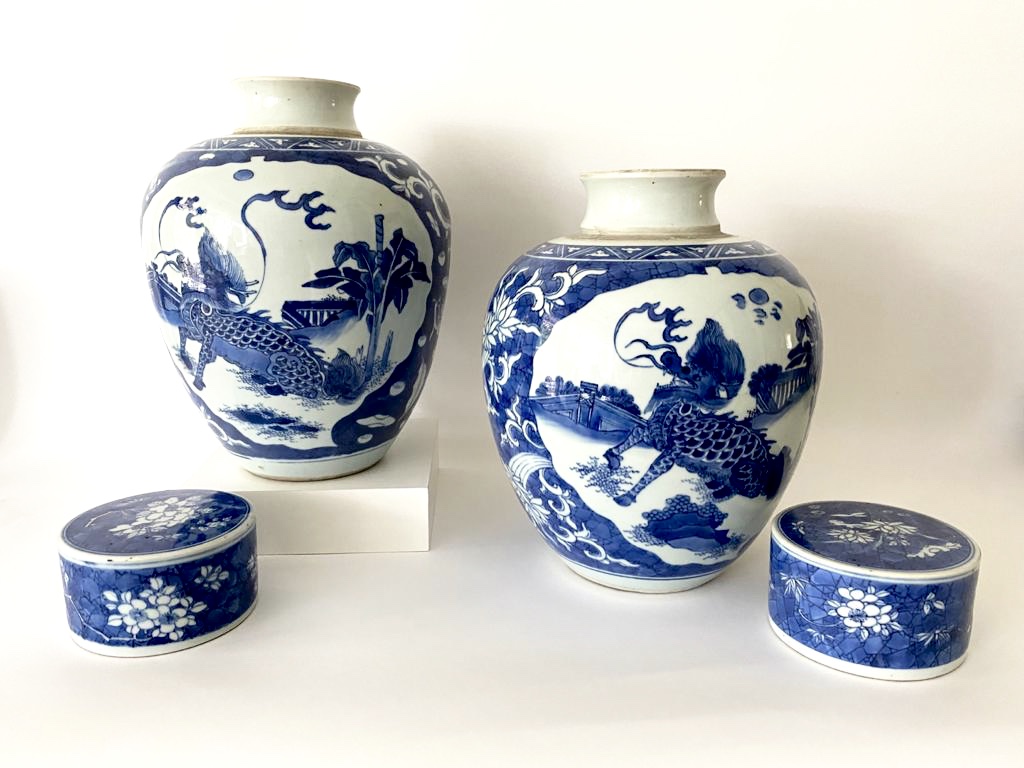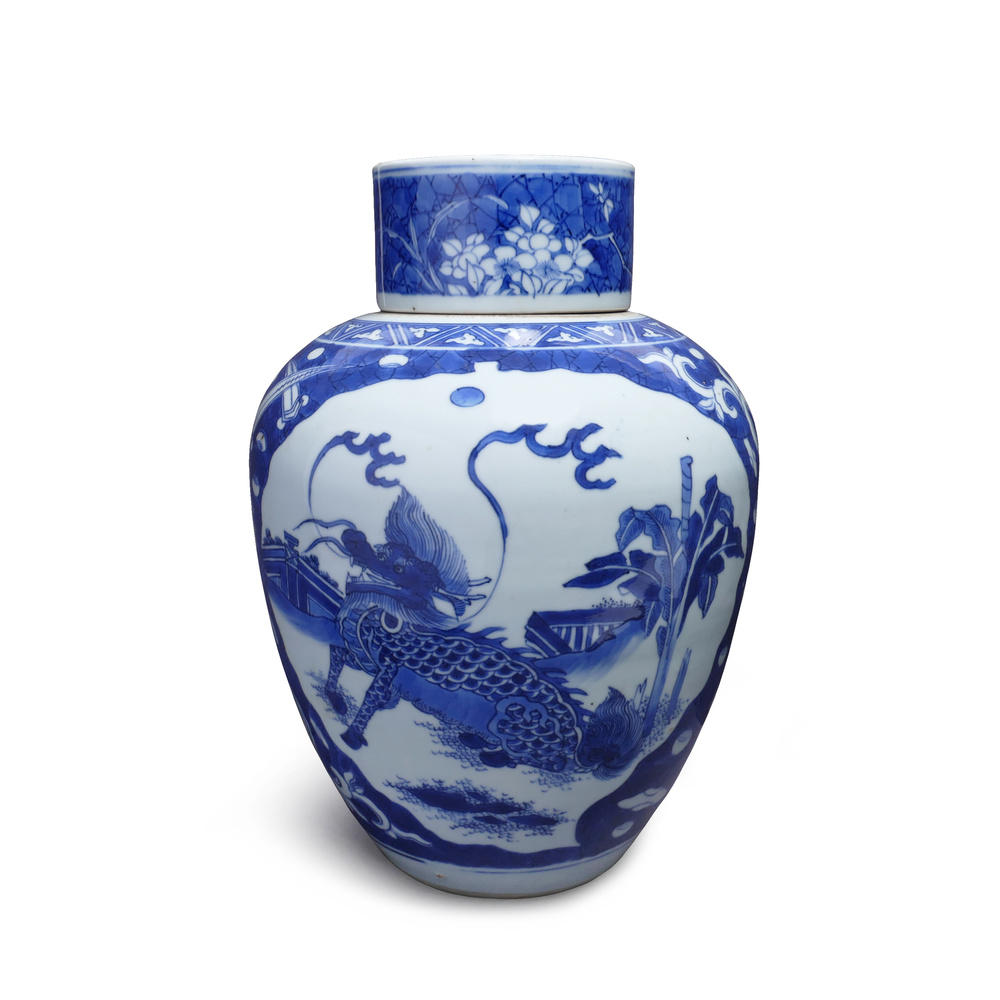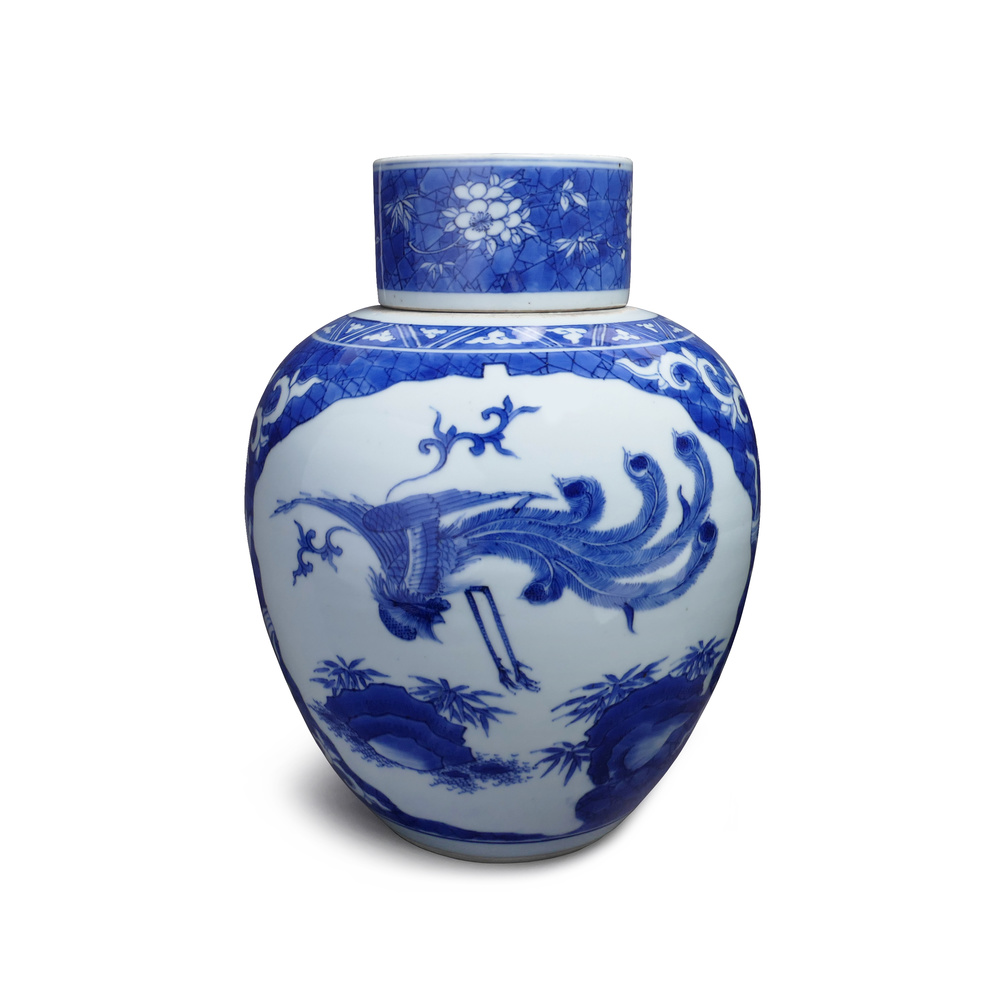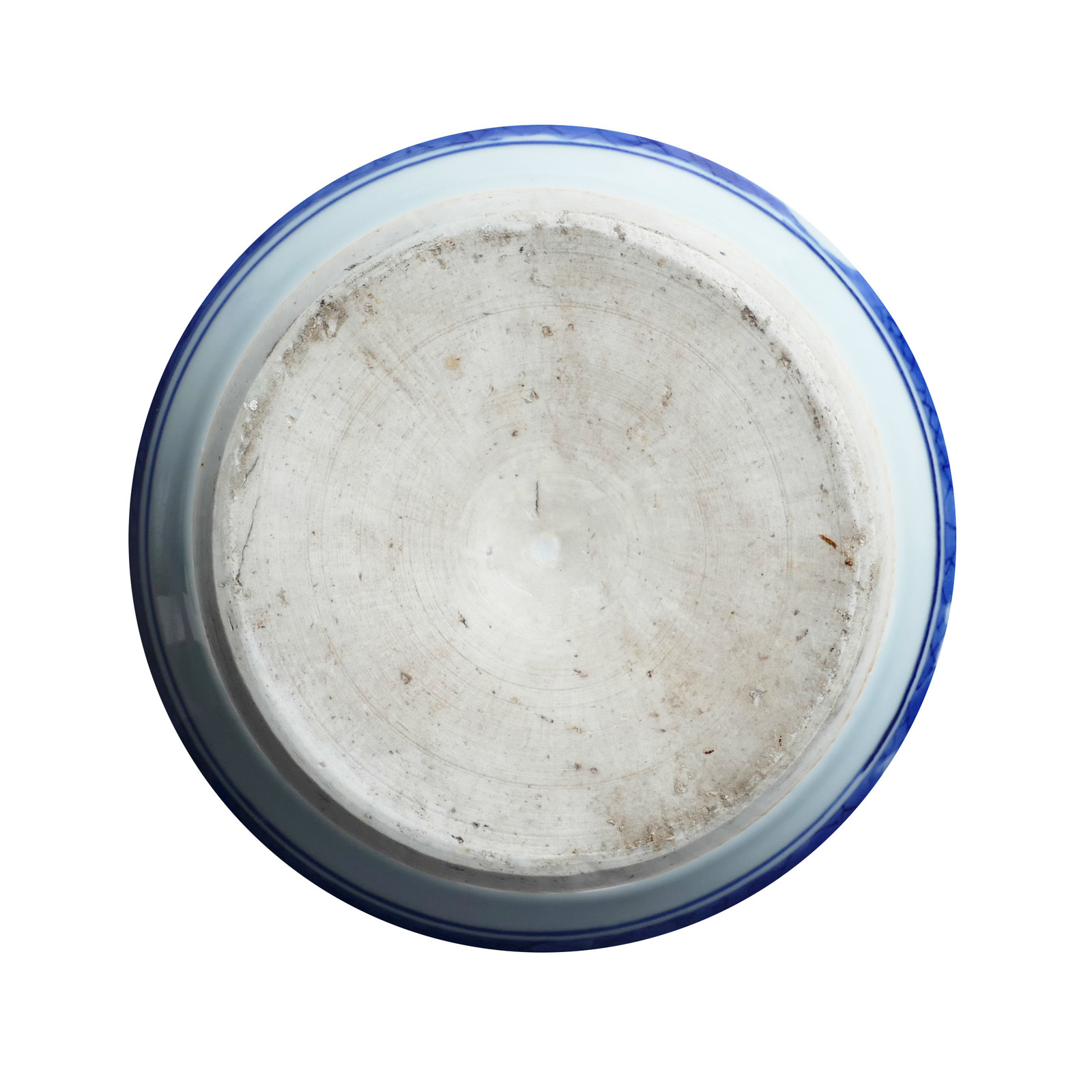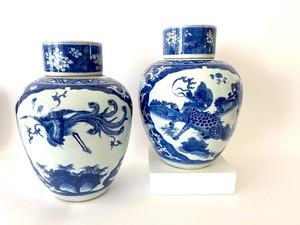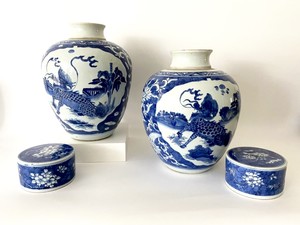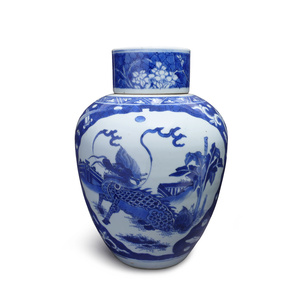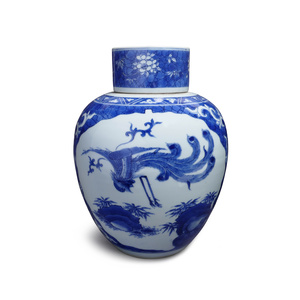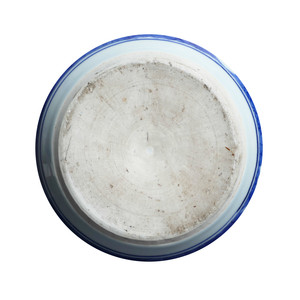Chongzhen-Shunzhi, circa 1635-1650
The vases are of ovoid shape, tapering towards the foot, each with a waisted neck and flaring rim. The necks are surrounded by an unglazed band on the shoulders, on which the cylindrical covers are resting. The exterior of each vase is painted in underglaze blue with two large leaf-shaped cartouches, one enclosing a large phoenix flying over rocks and bamboo, the other with a qilin amidst rocks, fences and a banana plant, below a sun or moon. The cartouches are reserved against a ‘cracked ice’ ground below a zigzag border around the shoulders. On one vase the ground is reserve-decorated with dragons amidst different kinds of sea shells, on the other with scrolling lotus. The interiors are entirely glazed. The covers are similarly decorated with bamboo and flowers against a ‘cracked ice’ ground. The concave bases are left unglazed.
30 and 31 cm high
Provenance: Formerly in the Crone-Haver Droeze Collection
The shape of the present vases or jars, sometimes referred to as ‘ginger jars’, and the ‘cracked ice’ motif were long associated with the Kangxi period (1662-1722). It was not until Hatcher’s discovery of the ‘Chinese Junk’ shipwreck that their origins could be attributed to the Chongzhen period (1628-1644). Unlike several other ‘high-Transitional’ shapes, like ‘rolwagens’ and oval jars with domed covers, ‘ginger jars’ remained fashionable during the Kangxi period. The qilin, particularly fashionable in the Shunzhi period, is a symbol of good omen and was believed to only appear during the reign of a benevolent king. It is also associated with longevity, felicity and the bringer of illustrious sons. The phoenix is the symbol of the empress and, like the qilin, only appears in times of peace and prosperity. The combination of these two legendary animals on the present jars may reflect the uncertain times between the Ming and Qing dynasty and the hope for stability and prosperity.
